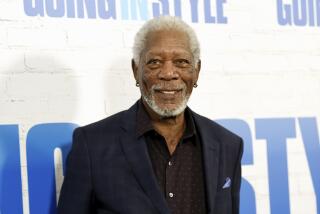Many firms have boosted February magazine ad budgets to cash in on Black History
- Share via
This month--weeks after most magazines have shrunk to normal size following the end of the heavy Christmas advertising season--many black-oriented publications such as Ebony, Essence and Black Enterprise are fat with ads, thanks to the designation of February as Black History Month.
In an effort to garner good will from the nation’s black consumers who spend an estimated $240 billion annually, many of the country’s biggest advertisers--including Anheuser-Busch Inc., AT&T;, Burger King, Miller Brewing Co., Eastern Airlines, McDonalds and Coca-Cola--have taken out full-page ads in black magazines and newspapers touting the achievements of black historical figures and celebrating black history month.
“The February issues of most magazines tend to be thin issues after the heavy spending from September through December,” explained Clarence O. Smith, president of Essence Communications Inc., publisher of the black women’s magazine Essence. “If it were not for Black History Month, we, as well as other black publications, would do a lot less well in February.”
The February issue of Ebony contains at least 10% more advertising than the December issue and is the largest behind the special August issue of Ebony, said Dennis Boston, vice president of advertising. The February Black Enterprise, with 244 pages, was more than twice the size of the 100-page December issue.
Although the special advertising efforts have boosted the economic fortunes of many black advertising agencies and black publications, some black historians complain that the educational value of the campaigns may be suspect.
“The possibility exists for exploitation . . . because these companies are engaged in business to make money,” said Karen A. Robinson, executive director of the Assn. for the Study of Afro-American Life and History, a Washington-based group that founded Black History Month. “They are not historians. I think a better way for Black History Month to be celebrated would be for corporations to work with organizations like ours that have some expertise in the field.”
Black historical achievement has been publicly recognized each year since at least 1926, when historian Carter G. Woodson started Negro History Week. But corporations did not embrace the observance as a marketing tool until they began hiring black advertising agencies in the 1970s, said Ken Smikle, editor and publisher of Target Market News, a Chicago-based trade publication that follows the black consumer market.
Awards, Scholarships
The trend gained momentum in 1986, Smikle said, with the designation of Martin Luther King Jr.’s birthday as a federal holiday. As a result, he said, more and more of the $700 million advertisers spend annually to reach black consumers--out of the $24 billion in total ad spending--is showered on black publications between January and February.
In addition, companies such as Miller, McDonalds and Coca-Cola spend millions more in promotions and sponsorships aimed at black consumers.
Coke, for example, will award more than $130,000 in college scholarships through Coca-Cola’s “Share the Dream” scholarship sweepstakes that run in conjunction with Black History Month, said Charles Morrison, vice president of black and Hispanic consumer markets.
While the advertisers emphasize that they market to black consumers throughout the year, they say they make special efforts during February in order to maintain awareness of their products as well as enhance their reputations as being sensitive to the black community.
“These ads are not intended to sell products,” said Ivan Burwell, Coors national program manager. “I simply see it as a recognition by Coors of the importance of the black consumer market. It certainly is an honest and sincere effort to recognize black achievement.”
However, historians complain that many ads avoid controversial political figures in black history.
Although at least two recent ads mention Black Muslim Malcolm X, most highlight inventors or pre-colonization African royalty. An AT&T; advertisement depicts inventor Lewis Latimer, for example. Similarly, an Eastern Airlines ad features African kings.
Historian John Henrike Clarke, a professor emeritus of African History at Hunter College in New York who has written or edited 25 books on black history and served as a historical consultant to companies that do Black History Month advertising, says that while some of the ads expose Americans to information they might not otherwise be aware of, some of the efforts at black history are “superficial.”
“In general, these are not benevolent efforts; they are mostly public relations,” Clarke said. “I’m not saying they are evil in any way. Its just that they have their own self-interest, which is to sell more of their products and services. As a result, they cite the safe historical figures. They don’t cite . . . ones like Marcus Garvey because they don’t want to cause trouble.”
BLACK HISTORY MONTH
Begun in 1926 as “Negro History Week” by historian Carter G. Woodson, Black History Month attempts to spotlight the influence of blacks on history. The seven-day tribute was expanded to all of February in 1976.
The observance is sponsored by the Assn. for the Study of Afro-American Life and History, a Washington-based group of about 200 historians founded by Woodson.
The theme for this year’s observance is “The Role of Afro-American Churches in Economic, Political and Social Development at Home and Abroad.”
More to Read
Inside the business of entertainment
The Wide Shot brings you news, analysis and insights on everything from streaming wars to production — and what it all means for the future.
You may occasionally receive promotional content from the Los Angeles Times.










